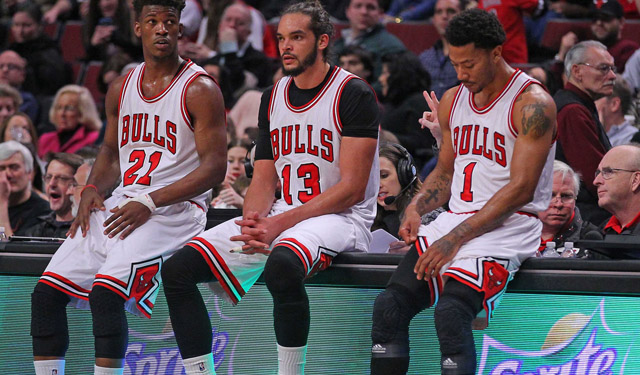The Chicago Bulls announced point guard Derrick Rose will have surgery on his torn medial meniscus on Friday. The surgery to be performed is a meniscectomy -- the remove of part or all of the meniscus. The difference in how much of the meniscus needs to be removed carries dramatic differences in short-term and long-term prognosis for Rose and the Bulls this season and moving forward past 2014-15.
K.C. Johnson of the Chicago Tribune says there is "considerable optimism" that the repair required is small, which would mean a less severe long-term effect on Rose's career. A small tear would require just a little portion of the cartilage to be trimmed by the surgeon. Teammate Doug McDermott was back on the court in three weeks and able to practice after four weeks, following a similar procedure earlier this season.
The Bulls announced Derrick Rose is scheduled to have surgery on Friday morning to repair a medial meniscus tear in his right knee.
The Bulls said Rose will undergo a meniscectomy, which is a removal of part or all of the meniscus. The Tribune, citing sources, has reported there is considerable optimism that Rose's second meniscus tear is small.
If the tear is small and only a small portion of the meniscus is trimmed, it's possible Rose's timeline could be in the three- to six-week period. Rookie Doug McDermott, who didn't have the injury history Rose did, returned to the court following his meniscus surgery in three weeks and to practice in four.
Since Rose had a similar tear a season ago, it's unlikely he'd be able to just get it repaired again this time around. The removal of part or all of the meniscus is the most likely scenario. If you remove all of the meniscus, Rose could potentially return this season and be able to help the Bulls attempt to march toward the NBA Finals. It's a much less problematic recovery process for getting back on the court than if you just remove part of the meniscus.
Removing part of the meniscus instead of the entire disc of cartilage would put Rose out for months and effectively end his season. It would also mean a lower likelihood of pain and re-injury to that same knee, whereas the removal of the entire meniscus increases the chances of pain and a shorter playing career, depending on how Rose is able to change his game going forward.
Since Rose has always been so dependent on athleticism, speed, and explosiveness, playing with bone-on-bone contact in the knee might end up being too painful over the next few years as he tries to battle to get back onto the court and play at a high level. To be able to leave some of the meniscus in the knee joint allows the benefit of cushioning in there.
The two scenarios that often get compared in situations like this are Russell Westbrook, who had the meniscus repaired. After a couple of procedures to fix a suture and clean up the knee, he's back to his same explosive self that we're used to. However, the removal of the meniscus or part of the meniscus also brings about comparisons to Brandon Roy, who ended up playing with bone-on-bone pain that eventually ended his career early.
